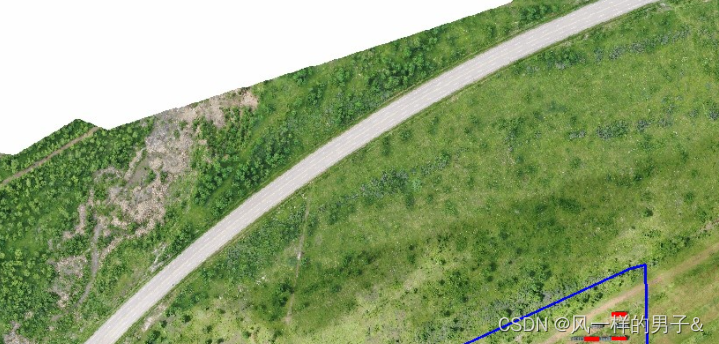[RSS]
The key differences between Python 2.7.x and Python 3.x with examples
Many beginning Python users are wondering with which version of Python they should start. My answer to this question is usually something along the lines “just go with the version your favorite tutorial was written in, and check out the differences later on.”
But what if you are starting a new project and have the choice to pick? I would say there is currently no “right” or “wrong” as long as both Python 2.7.x and Python 3.x support the libraries that you are planning to use. However, it is worthwhile to have a look at the major differences between those two most popular versions of Python to avoid common pitfalls when writing the code for either one of them, or if you are planning to port your project.
Sections
- Sections
- The
__future__module - The print function
- Python 2
- Python 3
- Integer division
- Python 2
- Python 3
- Unicode
- Python 2
- Python 3
- xrange
- Python 2
- Python 3
- The
__contains__method forrangeobjects in Python 3- Note about the speed differences in Python 2 and 3
- Raising exceptions
- Python 2
- Python 3
- Handling exceptions
- Python 2
- Python 3
- The next() function and .next() method
- Python 2
- Python 3
- For-loop variables and the global namespace leak
- Python 2
- Python 3
- Comparing unorderable types
- Python 2
- Python 3
- Parsing user inputs via input()
- Python 2
- Python 3
- Returning iterable objects instead of lists
- Python 2
- Python 3
- Banker’s Rounding
- Python 2
- Python 3
- More articles about Python 2 and Python 3
The __future__ module
Python 3.x introduced some Python 2-incompatible keywords and features that can be imported via the in-built __future__ module in Python 2. It is recommended to use __future__ imports it if you are planning Python 3.x support for your code. For example, if we want Python 3.x’s integer division behavior in Python 2, we can import it via
from __future__ import division
More features that can be imported from the __future__ module are listed in the table below:
| feature | optional in | mandatory in | effect |
|---|---|---|---|
| nested_scopes | 2.1.0b1 | 2.2 | PEP 227: Statically Nested Scopes |
| generators | 2.2.0a1 | 2.3 | PEP 255: Simple Generators |
| division | 2.2.0a2 | 3.0 | PEP 238: Changing the Division Operator |
| absolute_import | 2.5.0a1 | 3.0 | PEP 328: Imports: Multi-Line and Absolute/Relative |
| with_statement | 2.5.0a1 | 2.6 | PEP 343: The “with” Statement |
| print_function | 2.6.0a2 | 3.0 | PEP 3105: Make print a function |
| unicode_literals | 2.6.0a2 | 3.0 | PEP 3112: Bytes literals in Python 3000 |
from platform import python_version The print function
Very trivial, and the change in the print-syntax is probably the most widely known change, but still it is worth mentioning: Python 2’s print statement has been replaced by the print() function, meaning that we have to wrap the object that we want to print in parantheses.
Python 2 doesn’t have a problem with additional parantheses, but in contrast, Python 3 would raise aSyntaxError if we called the print function the Python 2-way without the parentheses.
Python 2
print 'Python', python_version() print 'Hello, World!' print('Hello, World!') print "text", ; print 'print more text on the same line' Python 2.7.6
Hello, World!
Hello, World!
text print more text on the same line
Python 3
print('Python', python_version()) print('Hello, World!') print("some text,", end="") print(' print more text on the same line') Python 3.4.1
Hello, World!
some text, print more text on the same line
print 'Hello, World!' File "", line 1
print 'Hello, World!'
^
SyntaxError: invalid syntax
Note:
Printing “Hello, World” above via Python 2 looked quite “normal”. However, if we have multiple objects inside the parantheses, we will create a tuple, since print is a “statement” in Python 2, not a function call.
print 'Python', python_version() print('a', 'b') print 'a', 'b' Python 2.7.7
('a', 'b')
a b
Integer division
This change is particularly dangerous if you are porting code, or if you are executing Python 3 code in Python 2, since the change in integer-division behavior can often go unnoticed (it doesn’t raise aSyntaxError).
So, I still tend to use a float(3)/2 or 3/2.0 instead of a 3/2 in my Python 3 scripts to save the Python 2 guys some trouble (and vice versa, I recommend a from __future__ import division in your Python 2 scripts).
Python 2
print 'Python', python_version() print '3 / 2 =', 3 / 2 print '3 // 2 =', 3 // 2 print '3 / 2.0 =', 3 / 2.0 print '3 // 2.0 =', 3 // 2.0 Python 2.7.6
3 / 2 = 1
3 // 2 = 1
3 / 2.0 = 1.5
3 // 2.0 = 1.0
Python 3
print('Python', python_version()) print('3 / 2 =', 3 / 2) print('3 // 2 =', 3 // 2) print('3 / 2.0 =', 3 / 2.0) print('3 // 2.0 =', 3 // 2.0) Python 3.4.1
3 / 2 = 1.5
3 // 2 = 1
3 / 2.0 = 1.5
3 // 2.0 = 1.0
Unicode
Python 2 has ASCII str() types, separate unicode(), but no byte type.
Now, in Python 3, we finally have Unicode (utf-8) strings, and 2 byte classes: byte and bytearrays.
Python 2
print 'Python', python_version() Python 2.7.6
print type(unicode('this is like a python3 str type'))
print type(b'byte type does not exist')
print 'they are really' + b' the same' they are really the same
print type(bytearray(b'bytearray oddly does exist though'))
Python 3
print('Python', python_version()) print('strings are now utf-8 \u03BCnico\u0394é!') Python 3.4.1
strings are now utf-8 μnicoΔé!
print('Python', python_version(), end="") print(' has', type(b' bytes for storing data')) Python 3.4.1 has
print('and Python', python_version(), end="") print(' also has', type(bytearray(b'bytearrays'))) and Python 3.4.1 also has
'note that we cannot add a string' + b'bytes for data' ---------------------------------------------------------------------------
TypeError Traceback (most recent call last)
in ()
----> 1 'note that we cannot add a string' + b'bytes for data'
TypeError: Can't convert 'bytes' object to str implicitly
xrange
The usage of xrange() is very popular in Python 2.x for creating an iterable object, e.g., in a for-loop or list/set-dictionary-comprehension.
The behavior was quite similar to a generator (i.e., “lazy evaluation”), but here the xrange-iterable is not exhaustible - meaning, you could iterate over it infinitely.
Thanks to its “lazy-evaluation”, the advantage of the regular range() is that xrange() is generally faster if you have to iterate over it only once (e.g., in a for-loop). However, in contrast to 1-time iterations, it is not recommended if you repeat the iteration multiple times, since the generation happens every time from scratch!
In Python 3, the range() was implemented like the xrange() function so that a dedicated xrange() function does not exist anymore (xrange() raises a NameError in Python 3).
import timeit n = 10000 def test_range(n): return for i in range(n): pass def test_xrange(n): for i in xrange(n): pass Python 2
print 'Python', python_version() print '\ntiming range()' %timeit test_range(n) print '\n\ntiming xrange()' %timeit test_xrange(n) Python 2.7.6
timing range()
1000 loops, best of 3: 433 µs per loop
timing xrange()
1000 loops, best of 3: 350 µs per loop
Python 3
print('Python', python_version()) print('\ntiming range()') %timeit test_range(n) Python 3.4.1
timing range()
1000 loops, best of 3: 520 µs per loop
print(xrange(10)) ---------------------------------------------------------------------------
NameError Traceback (most recent call last)
in ()
----> 1 print(xrange(10))
NameError: name 'xrange' is not defined
The __contains__ method for range objects in Python 3
Another thing worth mentioning is that range got a “new” __contains__ method in Python 3.x (thanks toYuchen Ying, who pointed this out). The __contains__ method can speedup “look-ups” in Python 3.x rangesignificantly for integer and Boolean types.
x = 10000000 def val_in_range(x, val): return val in range(x) def val_in_xrange(x, val): return val in xrange(x) print('Python', python_version()) assert(val_in_range(x, x/2) == True) assert(val_in_range(x, x//2) == True) %timeit val_in_range(x, x/2) %timeit val_in_range(x, x//2) Python 3.4.1
1 loops, best of 3: 742 ms per loop
1000000 loops, best of 3: 1.19 µs per loop
Based on the timeit results above, you see that the execution for the “look up” was about 60,000 faster when it was of an integer type rather than a float. However, since Python 2.x’s range or xrange doesn’t have a __contains__ method, the “look-up speed” wouldn’t be that much different for integers or floats:
print 'Python', python_version() assert(val_in_xrange(x, x/2.0) == True) assert(val_in_xrange(x, x/2) == True) assert(val_in_range(x, x/2) == True) assert(val_in_range(x, x//2) == True) %timeit val_in_xrange(x, x/2.0) %timeit val_in_xrange(x, x/2) %timeit val_in_range(x, x/2.0) %timeit val_in_range(x, x/2) Python 2.7.7
1 loops, best of 3: 285 ms per loop
1 loops, best of 3: 179 ms per loop
1 loops, best of 3: 658 ms per loop
1 loops, best of 3: 556 ms per loop
Below the “proofs” that the __contain__ method wasn’t added to Python 2.x yet:
print('Python', python_version()) range.__contains__ Python 3.4.1
print 'Python', python_version() range.__contains__ Python 2.7.7
---------------------------------------------------------------------------
AttributeError Traceback (most recent call last)
in ()
1 print 'Python', python_version()
----> 2 range.__contains__
AttributeError: 'builtin_function_or_method' object has no attribute '__contains__'
print 'Python', python_version() xrange.__contains__ Python 2.7.7
---------------------------------------------------------------------------
AttributeError Traceback (most recent call last)
in ()
1 print 'Python', python_version()
----> 2 xrange.__contains__
AttributeError: type object 'xrange' has no attribute '__contains__'
Note about the speed differences in Python 2 and 3
Some people pointed out the speed difference between Python 3’s range() and Python2’s xrange(). Since they are implemented the same way one would expect the same speed. However the difference here just comes from the fact that Python 3 generally tends to run slower than Python 2.
def test_while(): i = 0 while i <20000: i += 1 return print('Python', python_version()) %timeit test_while() Python 3.4.1
100 loops, best of 3: 2.68 ms per loop
print 'Python', python_version() %timeit test_while() Python 2.7.6
1000 loops, best of 3: 1.72 ms per loop
Raising exceptions
Where Python 2 accepts both notations, the ‘old’ and the ‘new’ syntax, Python 3 chokes (and raises aSyntaxError in turn) if we don’t enclose the exception argument in parentheses:
Python 2
print 'Python', python_version() Python 2.7.6
raise IOError, "file error" ---------------------------------------------------------------------------
IOError Traceback (most recent call last)
in ()
----> 1 raise IOError, "file error"
IOError: file error
raise IOError("file error") ---------------------------------------------------------------------------
IOError Traceback (most recent call last)
in ()
----> 1 raise IOError("file error")
IOError: file error
Python 3
print('Python', python_version()) Python 3.4.1
raise IOError, "file error" File "", line 1
raise IOError, "file error"
^
SyntaxError: invalid syntax
The proper way to raise an exception in Python 3:
print('Python', python_version()) raise IOError("file error") Python 3.4.1
---------------------------------------------------------------------------
OSError Traceback (most recent call last)
in ()
1 print('Python', python_version())
----> 2 raise IOError("file error")
OSError: file error
Handling exceptions
Also the handling of exceptions has slightly changed in Python 3. In Python 3 we have to use the “as” keyword now
Python 2
print 'Python', python_version() try: let_us_cause_a_NameError except NameError, err: print err, '--> our error message' Python 2.7.6
name 'let_us_cause_a_NameError' is not defined --> our error message
Python 3
print('Python', python_version()) try: let_us_cause_a_NameError except NameError as err: print(err, '--> our error message') Python 3.4.1
name 'let_us_cause_a_NameError' is not defined --> our error message
The next() function and .next() method
Since next() (.next()) is such a commonly used function (method), this is another syntax change (or rather change in implementation) that is worth mentioning: where you can use both the function and method syntax in Python 2.7.5, the next() function is all that remains in Python 3 (calling the .next() method raises an AttributeError).
Python 2
print 'Python', python_version() my_generator = (letter for letter in 'abcdefg') next(my_generator) my_generator.next() Python 2.7.6
'b'
Python 3
print('Python', python_version()) my_generator = (letter for letter in 'abcdefg') next(my_generator) Python 3.4.1
'a'
my_generator.next() ---------------------------------------------------------------------------
AttributeError Traceback (most recent call last)
in ()
----> 1 my_generator.next()
AttributeError: 'generator' object has no attribute 'next'
For-loop variables and the global namespace leak
Good news is: In Python 3.x for-loop variables don’t leak into the global namespace anymore!
This goes back to a change that was made in Python 3.x and is described in What’s New In Python 3.0 as follows:
“List comprehensions no longer support the syntactic form [... for var in item1, item2, ...]. Use [... for var in (item1, item2, ...)] instead. Also note that list comprehensions have different semantics: they are closer to syntactic sugar for a generator expression inside a list() constructor, and in particular the loop control variables are no longer leaked into the surrounding scope.”
Python 2
print 'Python', python_version() i = 1 print 'before: i =', i print 'comprehension: ', [i for i in range(5)] print 'after: i =', i Python 2.7.6
before: i = 1
comprehension: [0, 1, 2, 3, 4]
after: i = 4
Python 3
print('Python', python_version()) i = 1 print('before: i =', i) print('comprehension:', [i for i in range(5)]) print('after: i =', i) Python 3.4.1
before: i = 1
comprehension: [0, 1, 2, 3, 4]
after: i = 1
Comparing unorderable types
Another nice change in Python 3 is that a TypeError is raised as warning if we try to compare unorderable types.
Python 2
print 'Python', python_version() print "[1, 2] > 'foo' = ", [1, 2] > 'foo' print "(1, 2) > 'foo' = ", (1, 2) > 'foo' print "[1, 2] > (1, 2) = ", [1, 2] > (1, 2) Python 2.7.6
[1, 2] > 'foo' = False
(1, 2) > 'foo' = True
[1, 2] > (1, 2) = False
Python 3
print('Python', python_version()) print("[1, 2] > 'foo' = ", [1, 2] > 'foo') print("(1, 2) > 'foo' = ", (1, 2) > 'foo') print("[1, 2] > (1, 2) = ", [1, 2] > (1, 2)) Python 3.4.1
---------------------------------------------------------------------------
TypeError Traceback (most recent call last)
in ()
1 print('Python', python_version())
----> 2 print("[1, 2] > 'foo' = ", [1, 2] > 'foo')
3 print("(1, 2) > 'foo' = ", (1, 2) > 'foo')
4 print("[1, 2] > (1, 2) = ", [1, 2] > (1, 2))
TypeError: unorderable types: list() > str()
Parsing user inputs via input()
Fortunately, the input() function was fixed in Python 3 so that it always stores the user inputs as strobjects. In order to avoid the dangerous behavior in Python 2 to read in other types than strings, we have to use raw_input() instead.
Python 2
Python 2.7.6
[GCC 4.0.1 (Apple Inc. build 5493)] on darwin
Type "help", "copyright", "credits" or "license" for more information.
>>> my_input = input('enter a number: ')
enter a number: 123
>>> type(my_input)
>>> my_input = raw_input('enter a number: ')
enter a number: 123
>>> type(my_input)
Python 3
Python 3.4.1
[GCC 4.2.1 (Apple Inc. build 5577)] on darwin
Type "help", "copyright", "credits" or "license" for more information.
>>> my_input = input('enter a number: ')
enter a number: 123
>>> type(my_input)
Returning iterable objects instead of lists
As we have already seen in the xrange section, some functions and methods return iterable objects in Python 3 now - instead of lists in Python 2.
Since we usually iterate over those only once anyway, I think this change makes a lot of sense to save memory. However, it is also possible - in contrast to generators - to iterate over those multiple times if needed, it is only not so efficient.
And for those cases where we really need the list-objects, we can simply convert the iterable object into alist via the list() function.
Python 2
print 'Python', python_version() print range(3) print type(range(3)) Python 2.7.6
[0, 1, 2]
Python 3
print('Python', python_version()) print(range(3)) print(type(range(3))) print(list(range(3))) Python 3.4.1
range(0, 3)
[0, 1, 2]
Some more commonly used functions and methods that don’t return lists anymore in Python 3:
-
zip() -
map() -
filter() -
dictionary’s
.keys()method -
dictionary’s
.values()method -
dictionary’s
.items()method
Banker’s Rounding
Python 3 adopted the now standard way of rounding decimals when it results in a tie (.5) at the last significant digits. Now, in Python 3, decimals are rounded to the nearest even number. Although it’s an inconvenience for code portability, it’s supposedly a better way of rounding compared to rounding up as it avoids the bias towards large numbers. For more information, see the excellent Wikipedia articles and paragraphs:
- https://en.wikipedia.org/wiki/Rounding#Round_half_to_even
- https://en.wikipedia.org/wiki/IEEE_floating_point#Roundings_to_nearest
Python 2
print 'Python', python_version() Python 2.7.12
round(15.5) 16.0
round(16.5) 17.0
Python 3
print('Python', python_version()) Python 3.5.1
round(15.5) 16
round(16.5) 16
More articles about Python 2 and Python 3
Here is a list of some good articles concerning Python 2 and 3 that I would recommend as a follow-up.
// Porting to Python 3
-
Should I use Python 2 or Python 3 for my development activity?
-
What’s New In Python 3.0
-
Porting to Python 3
-
Porting Python 2 Code to Python 3
-
How keep Python 3 moving forward
// Pro and anti Python 3
-
10 awesome features of Python that you can’t use because you refuse to upgrade to Python 3
-
Everything you did not want to know about Unicode in Python 3
-
Python 3 is killing Python
-
Python 3 can revive Python
-
Python 3 is fine













 京公网安备 11010802041100号
京公网安备 11010802041100号